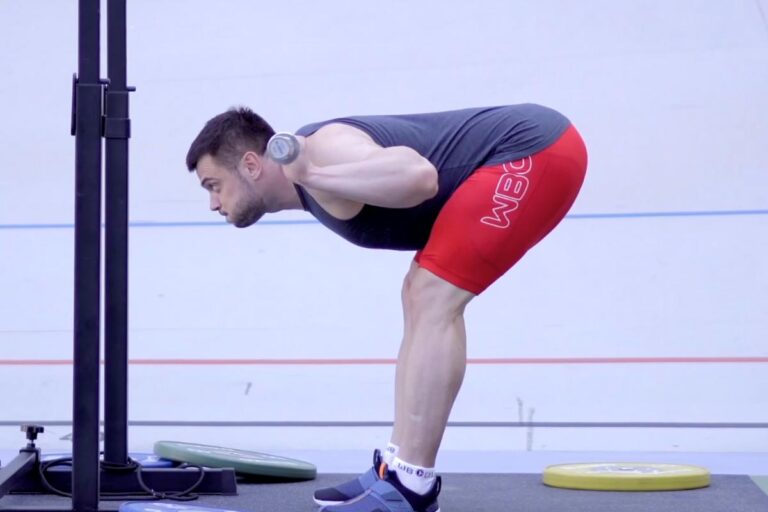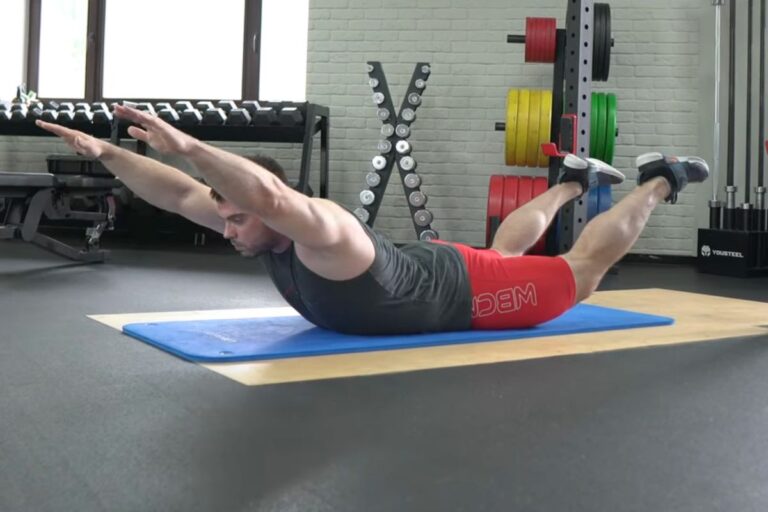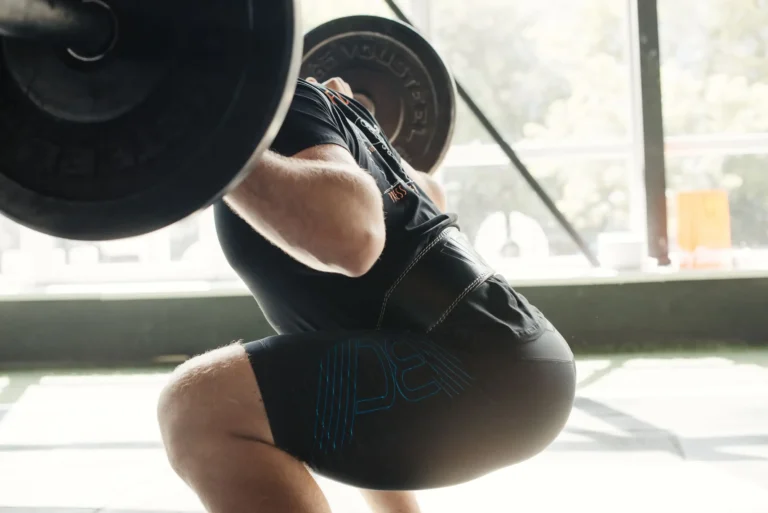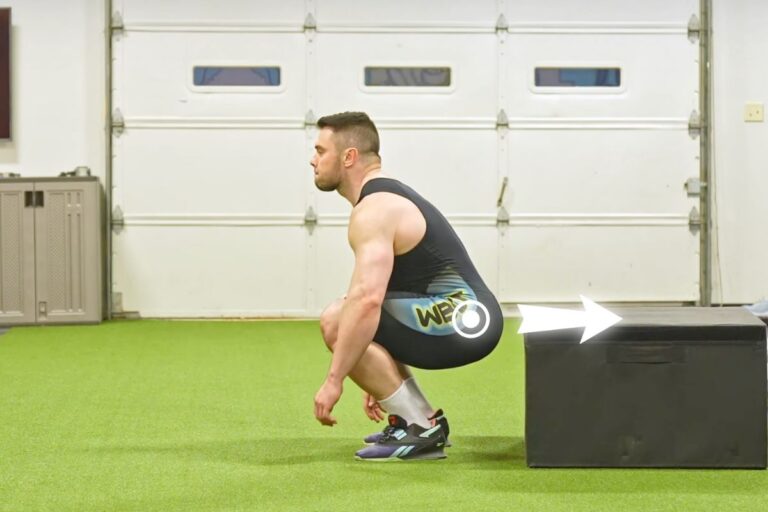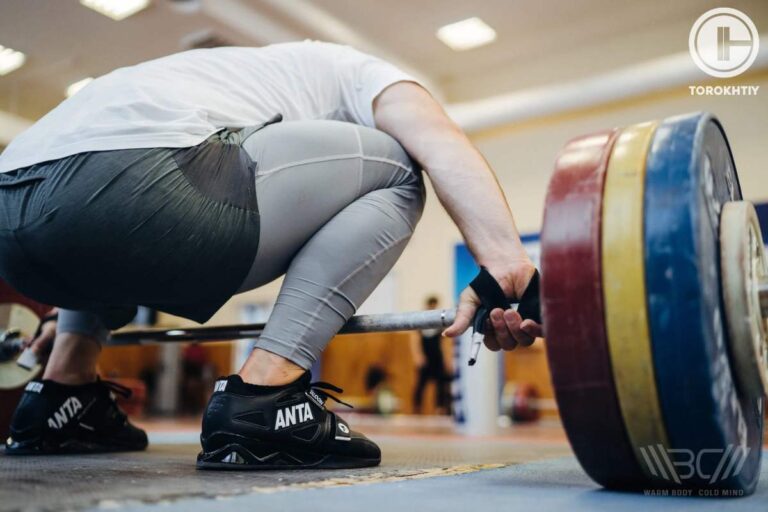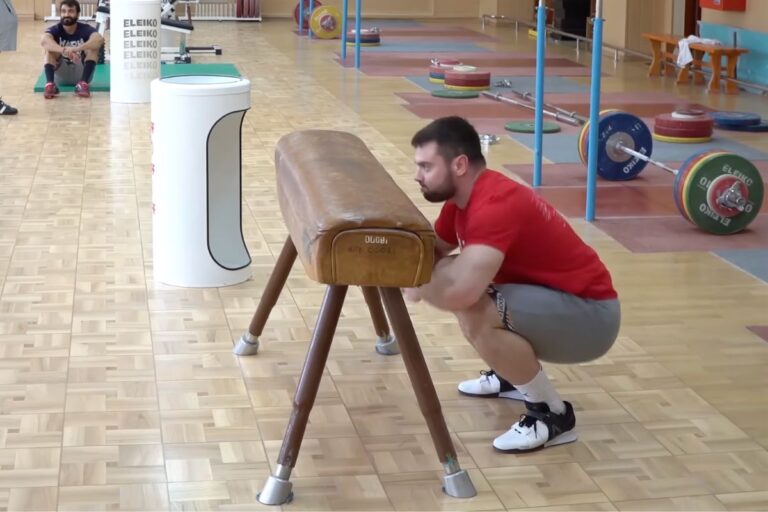CLEAN & JERK
Clean and jerk is one of the Olympic weightlifting exercises that is performed after the snatch at competitions.
What muscles are working in C&J?
The Olympic clean & jerk is a complex weightlifting movement that engages many different muscle groups in the body. Here is a detailed breakdown of the muscles that are primarily involved in each phase of the Clean and Jerk:
1. Clean Phase:
Quads: The quadriceps muscles on the front of the thigh are highly engaged in the Clean phase as the athlete lifts the barbell off the ground and drives upward into a standing position.
Hamstrings: The hamstrings muscles on the back of the thigh also play a crucial role in the Clean, as they help to extend the hips and generate power to lift the barbell.
Glutes: The gluteal muscles in the buttocks are activated during the Clean as the athlete drives the hips forward to propel the barbell upward.
Calves: The calf muscles are involved in the explosive extension of the ankle during the Clean phase.
Core: The core muscles, including the rectus abdominis, obliques, and erector spinae, are highly engaged during the Clean to maintain proper posture and stabilize the spine throughout the lift.
Upper Back: The muscles of the upper back, including the trapezius and rhomboids, play a key role in the Clean by helping to maintain a straight and rigid torso.
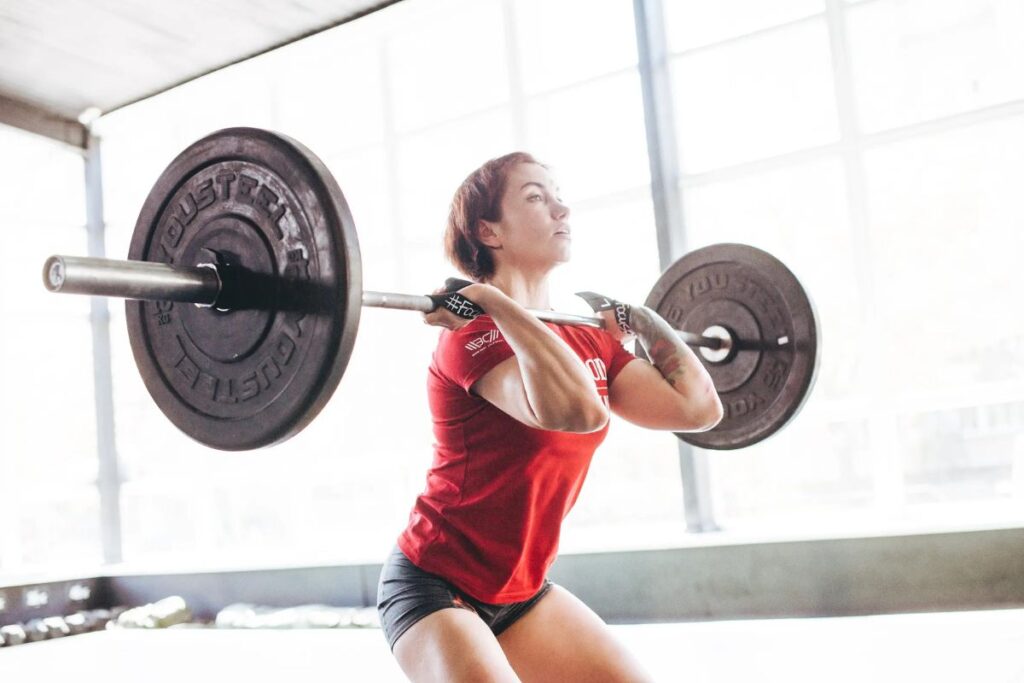
2. Jerk Phase:
Shoulders: The deltoid muscles in the shoulders are highly involved in the Jerk phase as the athlete drives the barbell overhead.
Triceps: The triceps muscles on the back of the arm are also engaged in the Jerk to help extend the elbow and lock out the arms overhead.
Chest: The chest muscles, including the pectoralis major and minor, play a supporting role in the Jerk to help stabilize the shoulder joint.
Legs: The legs, including the quads, hamstrings, and glutes, are also involved in the Jerk to provide stability and power during the lift.
Core: The core muscles are highly engaged in the Jerk to maintain proper posture and stability throughout the lift.
Overall, the barbell Clean and Jerk is a highly demanding movement that requires a combination of strength, power, and mobility from multiple muscle groups in the body.
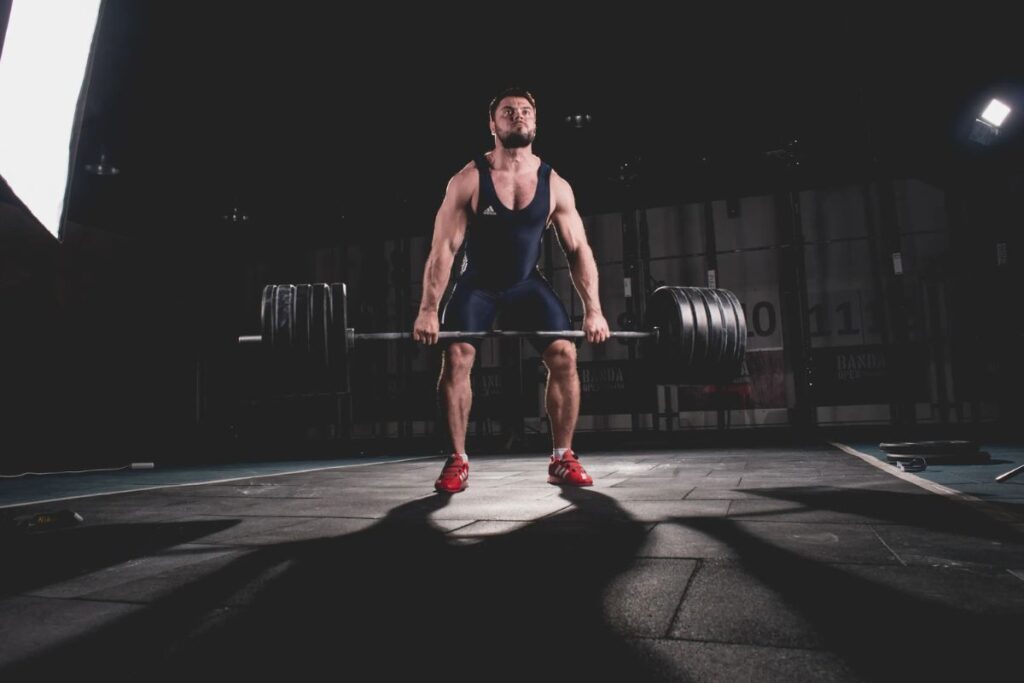
Olympic clean and jerk is a complicated movement in terms of technique. It consists of two separate exercises. First, athletes clean the bar and then jerk it. There are three different jerk techniques:
1. Split jerk – an athlete jerks the bar off their chest driving one leg forward and the other backward. After fixation and stabilization, they put the feet in line with each other again;
2. Push jerk – an athlete jerks the bar off the chest driving the legs approximately to the shoulder width apart and slightly squatting. After that, they recover with the bar fixed in the overhead position;
3. Squat jerk – an athlete jerks the barbell off the chest and goes down to the full squat balancing the bar. Then they recover to the standing position and fix the bar overhead.
To get a ‘good lift’, an athlete must fix the bar overhead, lock out the knees and parallel their feel.
The weight for barbell clean and jerk is almost always higher by 15-28% than the snatch result.
Due to technical difficulty, mainly experienced athletes include clean and jerk workout into their plans. However, a lot of beginners also try to do this exercise.
The methodology of clean & jerk learning is especially critical to minimize future injury risk.
Olympic weightlifters perform the clean & jerk at competitions and try to lift the highest possible weight.
Olympic clean and jerk exercise is also very popular in crossfit training. It often has different goals there. The most important is to increase workout tonnage and intensity. Clean and jerk crossfit sets are nearly the hardest due to high weight loads and technique requirements. If you read the general workout tonnage, you will see a huge number there.
Clean and jerk weightlifting involves quads, glutes, spine extensors and trunk muscles, triceps, and delts. Therefore, it is crucial to distribute the load properly within a week. There should be a balance between intensive clean & jerk workouts and pulls and squats. If you fail this, your muscles won’t recover and you will face overtraining. It will cease the progress and cause muscle pain and soreness, constant tiredness, sleep disorders, and central nervous system fatigue.
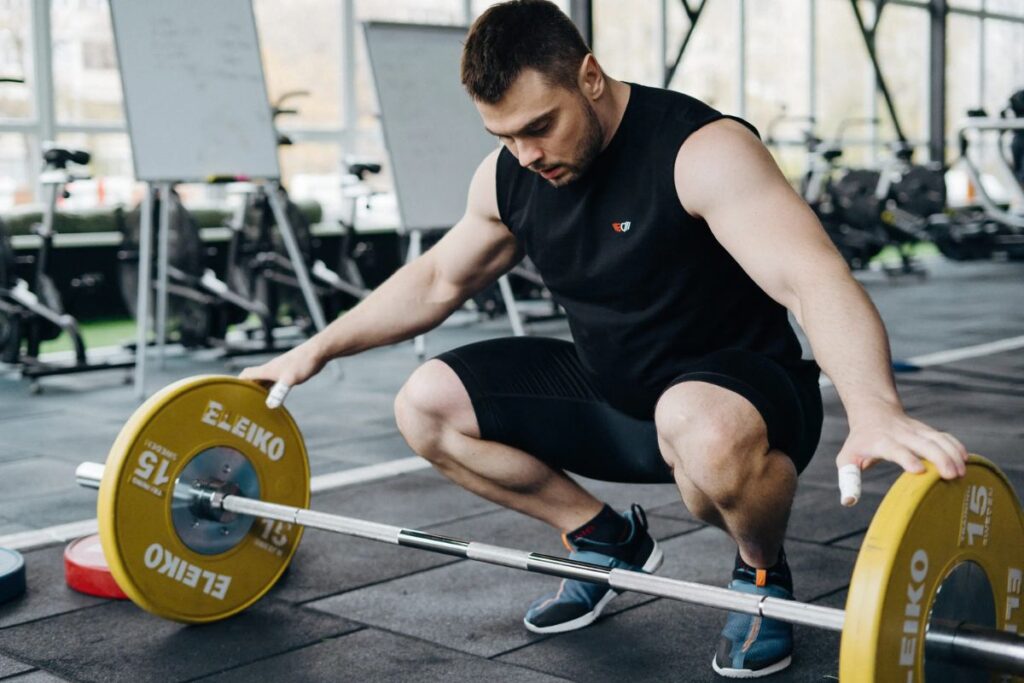
Clean & jerk technique
The clean and jerk progression is complicated in terms of technique so it’s better to reach out for an adequate and experienced coach. I will try to describe everything in detail but remember that only a look from the side can reasonably judge the technique, point out the mistakes and help to reach a desirable result. If you have no one to give you a hand, at least record your workouts and analyze them afterward. The best angle is 45°.
Clean and jerk workout is difficult in terms of technique so even professional athletes hone it year after year. It has a huge range of motion and consists of several stages:
- starting position;
- pull;
- power position;
- standing up;
- dip and drive;
- split fixation or the power jerk.
Let’s talk how to do clean and jerk.
Starting position:
The main purpose of the starting position is strong and effective angles which are critical for pulling the bar to the knee level and preparing for acceleration. It is important to understand that speed and explosive strength aren’t a priority for the starting position.
The main points:
– shoulder-width stance;
– hands slightly wider than the shoulders, the hook grip;
– toes slightly out, the center of gravity on the mid-foot;
– flat back, a natural arch in the lower back;
– look straight ahead;
– bar over the mid-foot, shoulders over the bar;
– shins lean forward so that you can move the knees in the first pull and get firm vertical support when the bar is at the knee level. The bar can touch the shin or be as close to it as possible.
An athlete must lift the bar off the platform with a powerful leg and back drive and accelerate it in order to perform a clean.
The power position is when the trunk and knees are slightly bent, an athlete is flat-footed, the bar is pushed towards the trunk, the shoulders and knees are in line and slightly over the bar. The explosion as a result of leg and trunk muscle cooperation provides reasonable spring mechanics and power.
The absence or improper explosion usually causes these mistakes:
– stiff hands;
– the bar drifts away;
– low speed;
– lack of power;
– improper move structure.
Turnover and catch:
After the full trunk extension, the bar is at the solar plexus level and you should switch to the downward movement at once. You must rotate your elbows as fast as you can and catch the bar in the deep squat.
Elbows Rotation is an important element in the clean turnover that is very often overlooked by novice athletes when learning about the clean progression. Find out more HERE.
Standing up:
After catching the bar on the chest in the deep squat, an athlete should rise back to the upright position. An important technical element in the recovery phase is the instantaneous switch from eccentric to concentric muscle work. Basically, this is the muscle/strength switch from going down into the bottom of the deep squat position to immediately rising back into a standing position. An athlete needs to train the spring skill to swiftly get up from the deep squat position. As the weight gets heavier, the barbell oscillation can either help or hinder an athlete as it can create additional load.
After rising up from the deep squat, an athlete has a few seconds to pull themselves together and get ready for the jerk.
Getting ready for the jerk.
Keep the elbows out so that the bar rests not on the chest but on the shoulders. Tense the trunk, open the chest, and relax the arms. The center of gravity should be on the mid-foot or closer to the heels.
The quality of the dip and drive phase is very important for the high clean and jerk exercise result. Athletes tend to make the dip too quick and short or don’t drive powerfully enough, shrinking the amplitude.
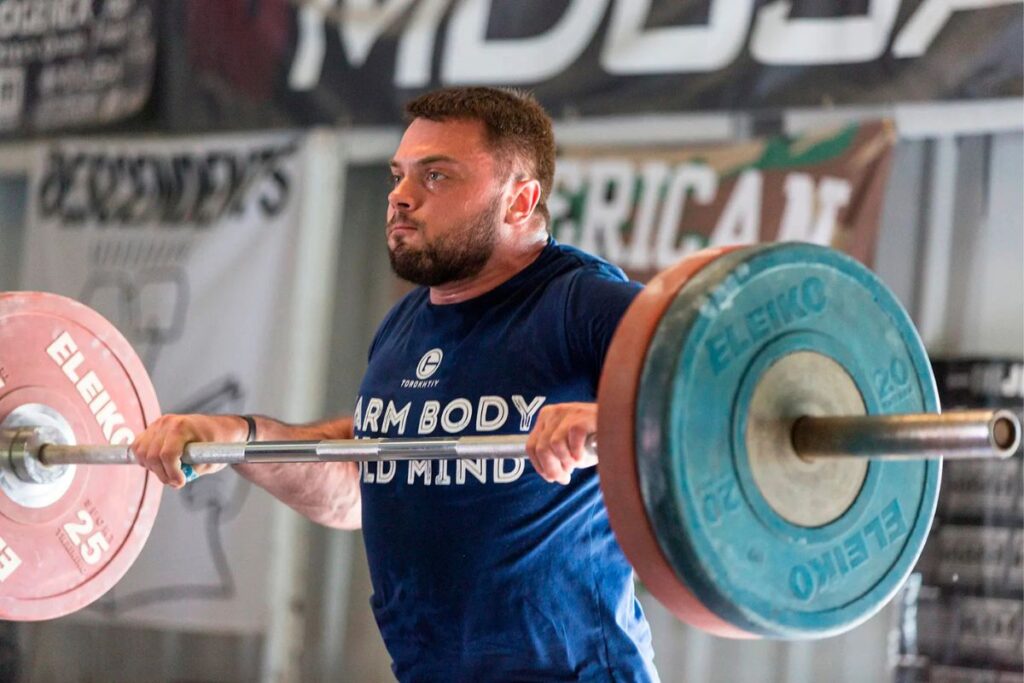
Catch position.
The catch in the Olympic Jerk refers to the moment when the athlete catches the barbell overhead, after driving it up with explosive force from the shoulders and legs. The catch is a critical part of the Jerk because it requires the athlete to stabilize the weight overhead, while also maintaining proper form and positioning. Here are some key points to keep in mind for the catch in the Olympic Jerk:
Foot Position: The athlete should split the legs forward and backward, creating a stable base of support with one foot in front of the other, as the barbell is driven overhead.
Bar Path: The barbell should be driven in a straight path overhead, with the athlete’s head moving out of the way as the bar passes. The bar should be caught directly over the head, with the arms fully extended.
Elbow Position: The athlete should aim to catch the barbell with the elbows locked out and slightly behind the head, to ensure proper stability and support.
Upper Back and Shoulders: The athlete’s upper back and shoulder muscles should be engaged to help support and stabilize the weight overhead, with the shoulders pulled down and back.
Hip and Knee Position: The athlete should maintain a stable and upright position in the hips and knees, with the front knee tracking over the toe of the front foot and the back knee almost touching the ground.
Breathing: The athlete should exhale forcefully as the barbell is driven overhead, and then take a deep breath to maintain intra-abdominal pressure during the catch.
Recovery: Once the barbell is caught overhead, the athlete should recover by standing up and bringing the feet back together, with the weight fully stabilized overhead.
Proper clean and jerk form during the catch in the Olympic Jerk is critical for both performance and safety, as an unstable or improperly executed catch can lead to injury or missed lifts. It’s important for athletes to work with a qualified coach or trainer to ensure proper technique and form during the Jerk, including the catch.
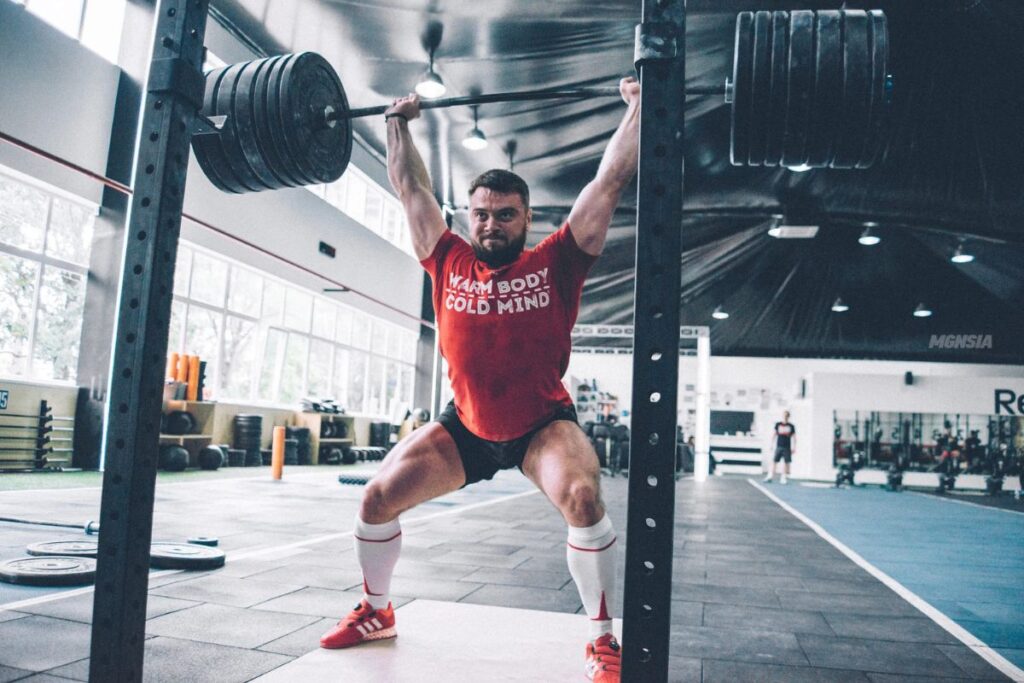
C&J Variations
There are several variations of the Olympic clean and jerk technique that can be used in training, depending on the athlete’s level of experience, training goals, and individual needs. Here are some of the most common variations:
1. Power Clean and Jerk
This variation involves catching the barbell at shoulder height, rather than in a full squat position, to focus on explosiveness and power in the hips and legs.
2. Hang Clean and Jerk
In this variation, the athlete starts with the barbell in a hang position, rather than from the ground, to focus on technique and explosiveness in the second pull.
3. Clean and Jerk Complexes
These involve performing multiple variations of the Clean and Jerk in succession, such as Power Clean + Front Squat + Jerk, to improve strength, power, and technique.
4. Clean and Jerk from Blocks or Rack
This variation involves performing the Clean and Jerk from elevated blocks or a rack, which can help to improve technique, explosiveness, and power.
5. Split Jerk
This variation involves splitting the legs forward and backward to catch the bar overhead, rather than catching it in a squat position, and can be useful for athletes who have difficulty stabilizing the barbell overhead.
6. Push Jerk
This variation involves driving the barbell overhead by pushing with the legs and arms, rather than splitting the legs, and can be useful for athletes who lack the mobility or stability for a Split Jerk.
These variations can be used in combination or as standalone exercises, depending on the athlete’s needs and training goals. It’s important to work with a qualified coach or trainer to ensure proper technique and safety when performing these exercises.
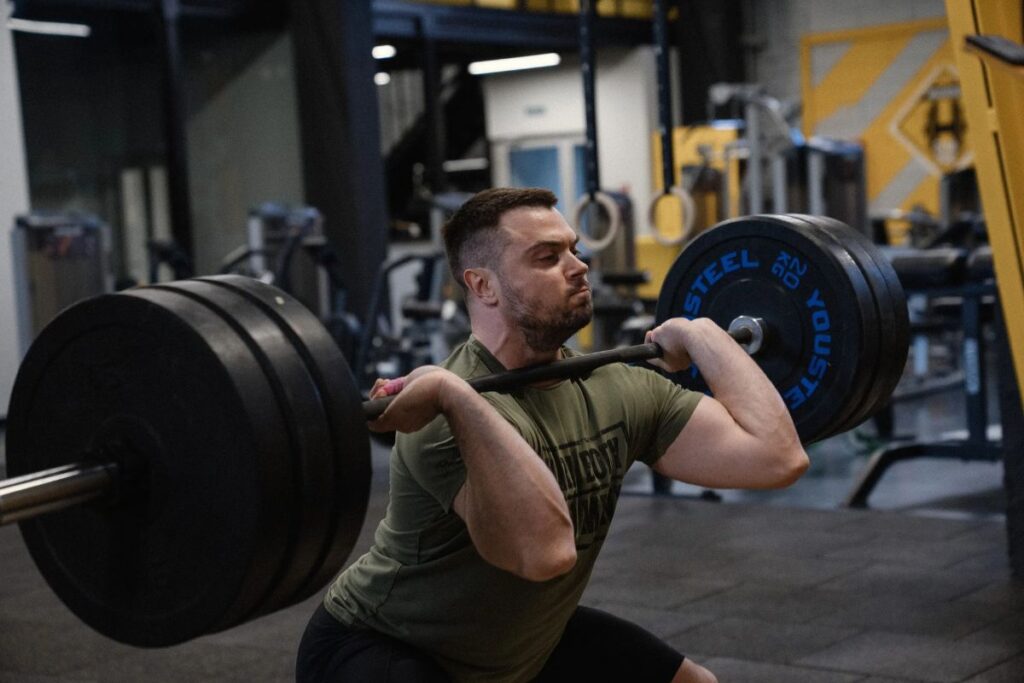
Mobility Importance For C&J
Mobility is important for the Clean & Jerk, as it can help to improve technique, increase range of motion, and prevent injury. Mobility refers to the ability of joints and muscles to move freely and without restriction through a full range of motion.
In the Clean & Jerk, mobility is important for several reasons:
Proper Positioning: Proper positioning is essential for lifting heavy weights safely and effectively. Adequate mobility in the hips, ankles, and shoulders can help the lifter achieve proper positioning during the Clean & Jerk, which can improve technique and reduce the risk of injury.
Improved Range of Motion: Mobility exercises can help to improve range of motion in the muscles and joints used during the Clean & Jerk. This can lead to better performance and improved results over time.
Injury Prevention: Limited mobility can increase the risk of injury during the Clean & Jerk, as it can cause compensations in other areas of the body. Improving mobility through targeted exercises can help to reduce the risk of injury and improve overall performance.
Some specific mobility exercises that can be helpful for the Clean & Jerk include:
Ankle mobility exercises, such as ankle dorsiflexion stretches or ankle circles
Hip mobility exercises, such as hip flexor stretches, pigeon pose, or sumo squats
Shoulder mobility exercises, such as shoulder dislocates or behind-the-neck presses
Wrist mobility exercises, such as wrist extensions or flexor stretches
Working with a qualified coach or trainer who can assess your mobility and recommend targeted exercises is the best way to ensure that you are addressing any mobility limitations and maximizing your potential in the Clean & Jerk.
Typical Novice Mistakes:
- Jerking the bar is more about leg effort, but not arm power. Still, the delts and triceps are responsible for stabilization.
- Don’t wear regular sneakers for performing the clean & jerk. Spend some money to buy high-quality weightlifting shoes which will help you to keep the trunk in the proper position while dipping.
- Reach out for an adequate coach. It is difficult to learn the proper technique on your own. However, a look from the side will help you correct the movement taking into account all body peculiarities.
- Pay special attention to the wrist and elbow warm-up. When the bar rests on the chest and the elbows are pointed forward, our joints and tendons are under great tension. Use statdynamic exercises to strengthen them additionally.
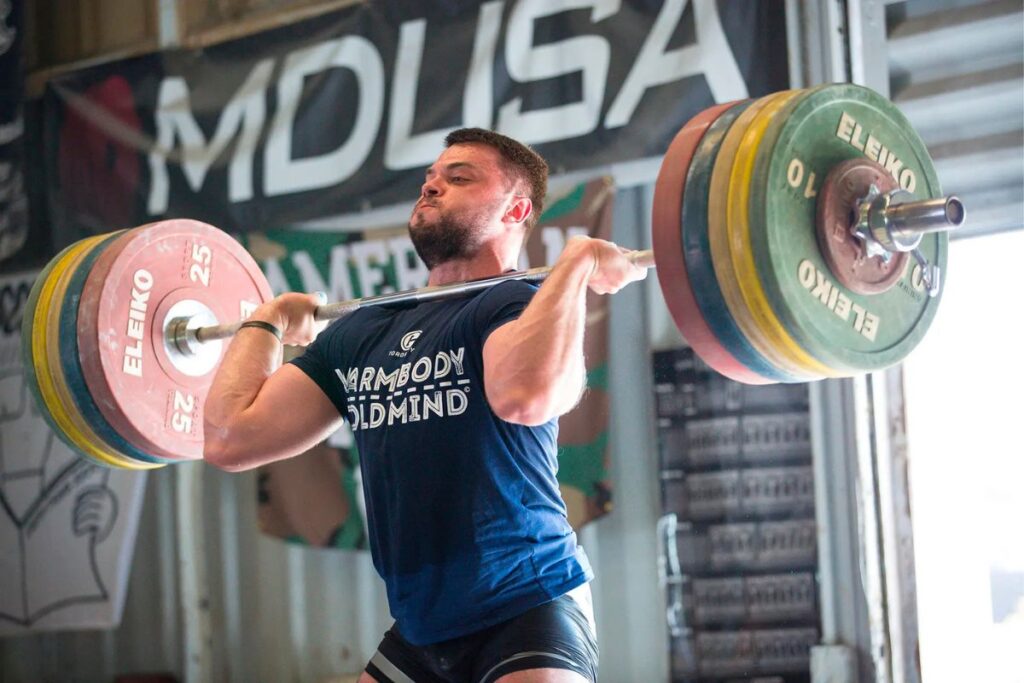
How To Make Progress In The Clean & Jerk?
Making progress in the Clean & Jerk requires a combination of proper technique, consistent training, and a structured plan for progressive overload. Here are some strategies that can help athletes make progress in this lift:
1. Focus on Technique
Proper technique is essential for maximizing strength and power output, as well as minimizing the risk of injury. Working with a qualified coach or trainer to ensure proper technique and form is essential, especially for beginners or those new to the lift.
2. Consistent Training
Consistent training is necessary to build strength and improve technique over time. Developing a structured training plan, which includes the Clean & Jerk as a regular component, can help athletes to build strength, power, and skill in this lift.
3. Progressive Overload
Progressive overload involves gradually increasing the amount of weight lifted over time. This can be accomplished through a variety of methods, such as adding weight to the bar, increasing the number of sets or reps, or decreasing rest time between sets.
4. Assistance Exercises
Incorporating assistance exercises can help to improve strength, technique, and mobility in the muscles used in the Clean & Jerk.
Use the following exercises:
–power jerk to concentrate on directing the bar over the head;
– overhead and front squats to empower the dip;
– split squats to train rising up from the split position;
– pause jerk with a 1-3-second stop in the half or full squat before finishing the exercise;
– clean pull from blocks, hyperextension with some weight, and your favorite ab and oblique muscle exercises to keep your trunk firm while standing up and avoid lower back injuries.
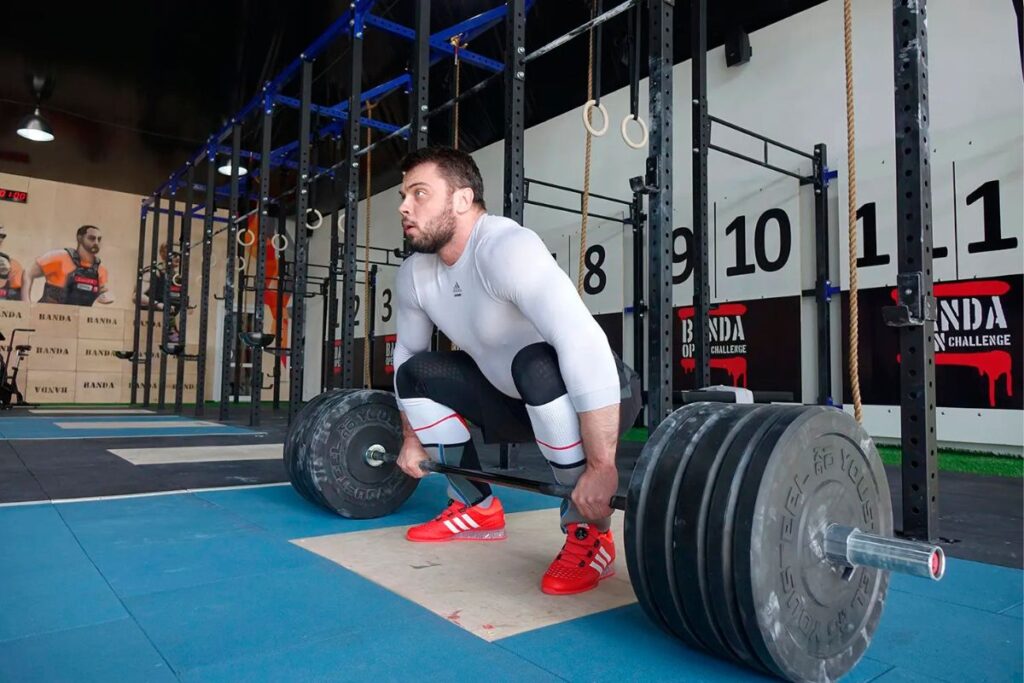
5. Deloads
Taking periodic deloads, or rest periods, can help to prevent overtraining and allow for recovery and adaptation. A deload can involve reducing the amount of weight lifted, decreasing the number of sets or reps, or taking a break from training altogether.
6. Nutrition and Recovery
Proper nutrition and recovery are essential for building strength and making progress in the Clean & Jerk. Eating a balanced diet that includes adequate protein, carbohydrates, and fats, as well as getting enough sleep and rest, can help to support muscle growth and recovery.
Overall, making progress in the Clean & Jerk requires a combination of patience, dedication, and consistency. By focusing on proper technique, consistent training, progressive overload, assistance exercises, deloads, and proper nutrition and recovery, athletes can improve their performance and achieve their goals in this lift.
Honing separate phases and doing accessory exercises are the secrets of the powerful clean & jerk.
Main Tips For Programming The Clean & Jerk:
1. Establish A Baseline
Before beginning a Clean & Jerk program, it is important to establish a baseline of your current capabilities. This can involve testing your one-rep max, assessing your technique, and identifying any areas of weakness that need to be addressed.
2. Set Realistic Goals
Once you have established a baseline, set realistic goals for yourself that align with your current abilities and long-term objectives. Goals should be specific, measurable, achievable, relevant, and time-bound (SMART), and should be revisited and adjusted regularly based on progress.
3. Include A Variety Of Exercises
A well-rounded Clean & Jerk program should include a variety of exercises that target different muscle groups and aspects of the lift, such as front squats and push jerks & presses. Including assistance exercises can help to improve technique, build strength and power, and prevent injury.
4. Monitor Progress
Tracking progress is essential for staying motivated and making adjustments as needed. Regularly testing your one-rep max, recording sets and reps, and tracking improvements in technique and strength can help to keep you on track and make adjustments as needed.
By following these tips and developing a well-rounded and structured program, you can improve your Clean & Jerk performance and achieve your goals. Remember to prioritize technique, include a variety of exercises, incorporate progressive overload and deloads, and track your progress over time.
Author: Oleksiy Torokhtiy
Olympic Weightlifting Champion
Best Results: Snatch – 200 kg,
C&J – 240 kg
Oleksiy Torokhtiy is a professional athlete boasting 20 years of experience in Olympic weightlifting. With multiple European and World titles under his belt, he has showcased his prowess in two Olympic Games (Beijing 2008 and London 2012). Upon concluding his illustrious career, Oleksiy dedicated himself to coaching. By 2022, he had conducted over 200 weightlifting seminars worldwide. He is the visionary behind an international sportswear and accessories brand known for its motto, “Warm Body Cold Mind.” Additionally, he is an esteemed author and the creator of a series of training programs and eBooks.


